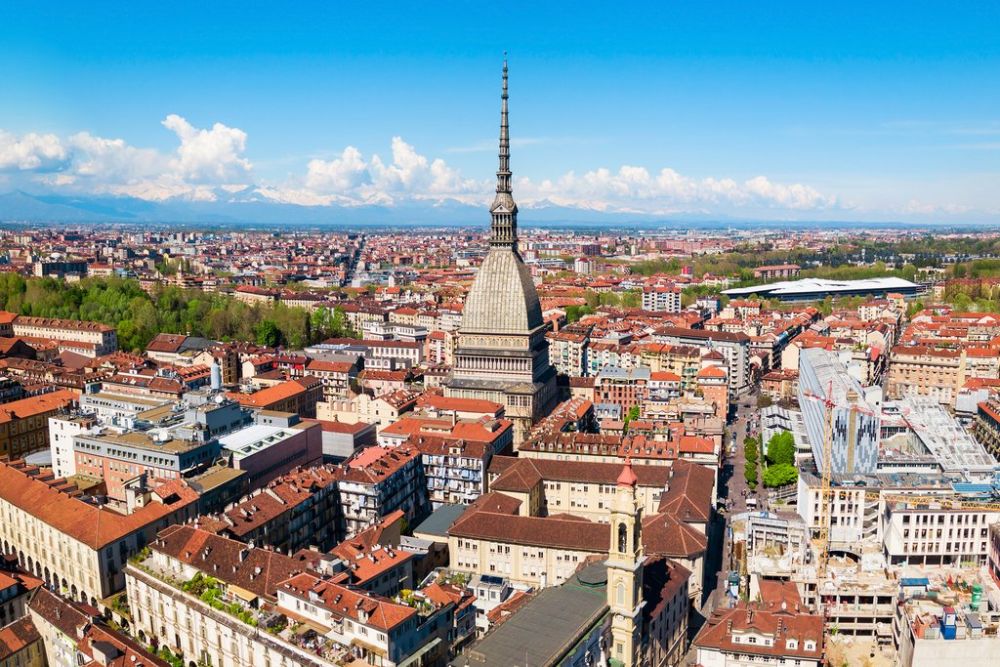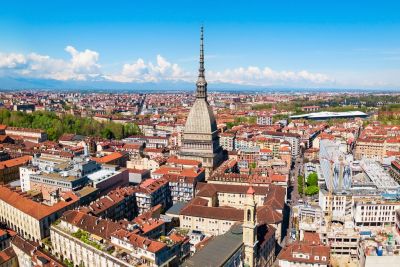

The Royal Palace of Turin, located in the heart of the city, is a magnificent example of Baroque architecture and a testament to the city's royal past. Visitors can walk through lavish halls, opulent state apartments, and beautifully manicured gardens. The Palace was the primary residence of the Savoy family and now serves as a museum showcasing art, armor, and furnishings from the Renaissance to the Neoclassical era. The Palace also includes the Royal Armoury, one of the world's most extensive collections of arms and armor. A tour through this UNESCO World Heritage site offers a glimpse into the life of European royalty and provides historical insights into the political and social evolution of Turin and Italy.
Turin's Egyptian Museum, or Museo Egizio, holds the title for having the most extensive collection of Egyptian artifacts outside of Cairo. Established in 1824, the museum houses over 30,000 items, including mummies, sarcophagi, papyrus scrolls, and the celebrated Mensa Isiaca. Touring the museum takes you on a historical journey through ancient Egyptian culture and civilization. Detailed exhibits cover the development of writing, religion, daily life, and artistic expression. The museum takes pride in its curation and the scientific rigor applied to Egyptology. Whether you're an enthusiast of ancient history or simply curious, this museum promises an educational and awe-inspiring experience into the wonders of an ancient world.
The Mole Antonelliana is an architectural landmark in Turin, initially conceived as a synagogue, now hosting the National Museum of Cinema. With its impressive dome and spire reaching up to 167 meters, it has become an iconic symbol of the city. A panoramic lift takes visitors to an observation deck providing remarkable views over Turin and the surrounding Alps. Inside, the museum is an immersive experience into the history of cinema, from early magic lanterns to modern-day film, featuring posters, props, and technology used in filmmaking. The Mole Antonelliana's blend of architectural beauty and cultural significance makes it an indispensable stop for anyone visiting Turin.
The Parco del Valentino is a renowned public park in Turin, sprawling along the banks of the River Po. It provides a peaceful escape from the urban environment with its open grassy areas, botanical gardens, and medieval village reproduction. The park is a prime spot for walking, jogging, or picnicking, with ample space to relax and enjoy nature. The 19th-century Castello del Valentino, which is part of the park, is another attraction featuring architectural beauty and historical significance. The park is also host to several events and festivals throughout the year, making it a central recreational hub for tourists and locals alike.
The National Automobile Museum, or MAUTO, located in Turin, is an homage to the automobile industry, with a particular emphasis on Italy's role in motor development. This museum is one of the most important of its kind in the world, housing over 200 unique vehicles. From vintage models to futuristic prototypes, the exhibits portray the evolution of cars throughout the years. The museum tells a story that intertwiles the history of automobiles with social and economic contexts, displaying brands like Fiat, Alfa Romeo, and Ferrari. It's a fascinating adventure for car enthusiasts and those interested in industrial progress, offering educational content and interactive displays.
The Quadrilatero Romano is Turin's ancient Roman quarter, brimming with narrow lanes and architectural treasures. As a bustling hub of activity, the area is known for its quaint boutiques, artisanal shops, and gastronomic delights. You can explore the Roman ruins, including an ancient theater, or delve into the many historic churches dotting the neighborhood. After sunset, the Quadrilatero transforms into a lively nightlife district, with bars, restaurants, and cafes offering opportunities to taste local and international cuisine, aperitifs, and Turinese chocolates. The atmosphere of old-world charm mixed with contemporary culture makes the Quadrilatero Romano a must-visit for a complete understanding of Turin’s layers of history.
Turin holds an air of mystery and is often associated with magic and esoteric traditions. The city is said to be one of the vertices of the Magic Triangle, along with Lyon and Prague. Guided tours delve into this mystical aspect, taking visitors on a journey through locations infused with white and black magic myths. You'll hear tales about alchemists, masons, and sinister legends as you wander through the streets and piazzas of the city. These tours not only present an alternative perspective of Turin but also offer a fresh look at its historical landmarks through the lens of the supernatural. It's an enthralling experience for those intrigued by the occult.
Turin is often labeled as Italy's chocolate capital, and for a good reason. The city's chocolate making tradition dates back to the 18th century. A chocolate tasting tour is a delight for the senses, allowing visitors to sample a range of chocolates from leading chocolatiers. This includes the famous gianduiotto, a hazelnut and chocolate confectionery native to Turin. Many of the chocolate shops are historical establishments, where you can learn about the chocolate making process and the history of local specialties. Beyond tasting, such tours often include hands-on workshops where participants can create their chocolates under the guidance of experienced artisans.
The Basilica di Superga is a stunning Baroque church situated on a hilltop overlooking Turin. Designed by the famous architect Filippo Juvarra in the 18th century, the basilica is the final resting place for many members of the House of Savoy. Visitors can admire the opulent interior, intricate art, and take a climb to the top of the dome for panoramic vistas of the city and the Alps. The hill's vantage point provides an excellent photo opportunity, and the serene surroundings are perfect for contemplation or prayer. The descent back to Turin offers views of picturesque vineyards, making the journey to the Basilica di Superga both spiritually and visually rewarding.
Eataly, which originated in Turin, is a vibrant marketplace combining a variety of restaurants, food and beverage counters, bakery, retail items, and a cooking school. This food emporium is dedicated to high-quality Italian food and sustainability, promoting the ‘slow food’ movement. Visitors can explore an exquisite array of regional foods including meats, cheeses, pasta, and more. Tastings and cooking classes are available for those who wish to deepen their knowledge about Italian gastronomy. The Eataly experience is a sumptuous journey through Italy's culinary traditions, packed into one dynamic and interactive space, making it a haven for food lovers.
